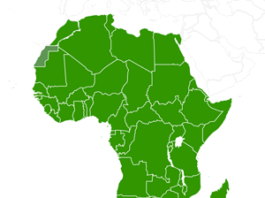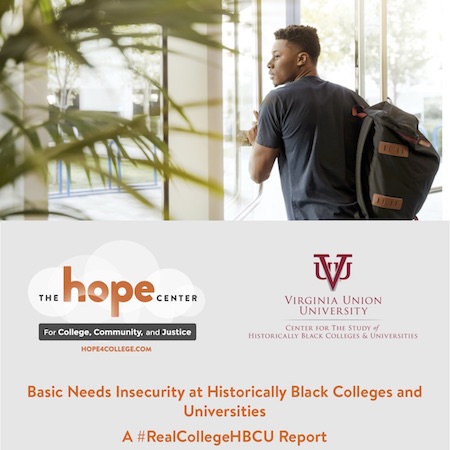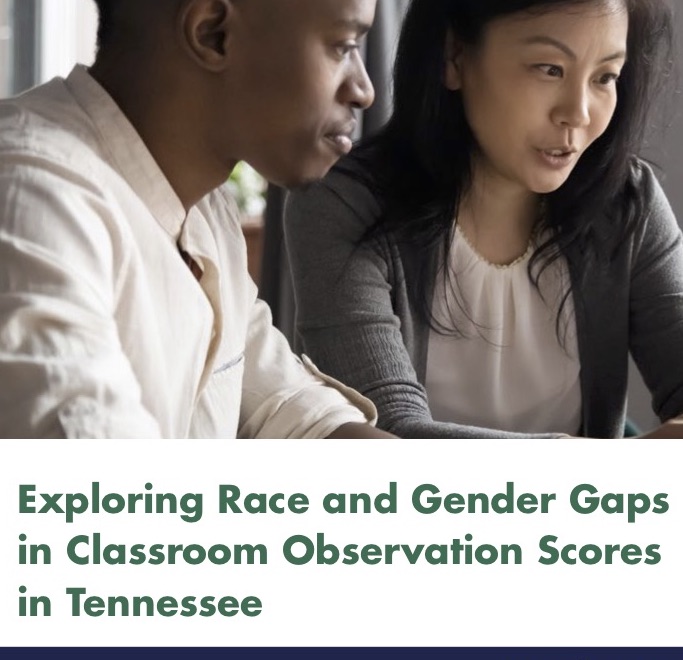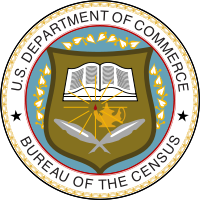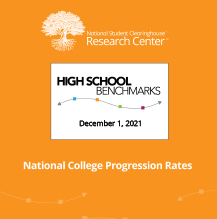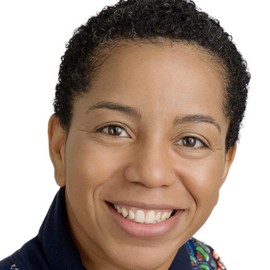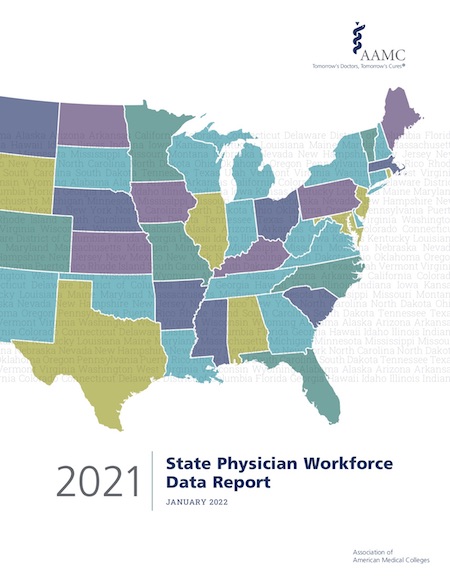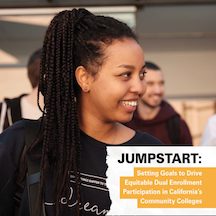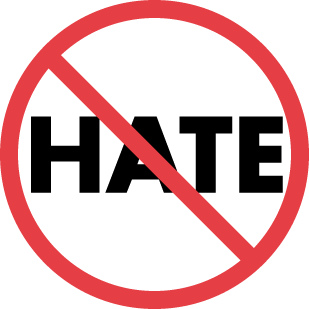Mentioning Racial or Ethnic Identity Can Increase Chances of Obtaining Career Help
In a new study, researchers at the Wharton School of the University of Pennsylvania found that people are significantly more likely to offer career help to people from underrepresented groups when help seekers mention their racial or ethnic identity in requests.
Survey Shows How Students at HBCUs Were Impacted by the COVID-19 Pandemic
The report from the Hope Center for College, Community, and Justice at Temple University in Philadelphia in conjunction with the Center for the Study of Historically Black Colleges and Universities at Virginia Union University, found that during the pandemic two-thirds of all HBCU students experienced basic needs insecurity.
Age, Race, and Early-Life Disadvantage Among College-Educated Mothers Impacts Birth Weights
According to a new study by researchers at Northwestern University in Evanston, Illinois, Black infants experience disproportionately high risks of low birth weight compared with non-Hispanic White infants, particularly among mothers with high educational attainment and greater socioeconomic advantage.
Study Finds That Hypertension Is a Major Factor in the Rise of Black Maternal...
Chronic hypertension is contributing substantially to maternal deaths in the United States, with particular risk among Black women, according to new research led by scholars at Rutgers University in New Jersey. The study found a 15-fold increase over the past 40 years in maternal mortality rates as a result of the condition.
A Snapshot of the Status of Black Teachers in the Nation’s K-12 Schools
New data from the U.S. Department of Education examines the background and school settings of Black or African American teachers in public and private schools in the United States before the coronavirus pandemic. During the 2017-18 school year, 7 percent of all teachers were Black or African American.
Researchers Find That El Niño Impacted the Volume of the Trans-Atlantic Slave Trade
El Niño, an oceanic phenomenon that affects worldwide weather patterns, significantly affected the number of enslaved Africans transported from West Africa to the Americas between the mid-1600s and mid-1800s, according to an interesting new study from the University of California, Davis.
Black Patients More Likely Than Whites to Be Described by Physicians in Negative Terms
Researchers at the University of Chicago searched the electronic health records of over 18,000 adult patients, including over 40,000 history and physical notes. They found that Black patients were 2.54 times as likely to have at least one negative descriptor in their medical records compared to White patients.
Study Finds That Black Male Teachers May Face Bias From Classroom Evaluators
A new study finds that when comparing similarly credentialed teachers whose pupils achieved at about the same level, White and female teachers were rated higher than Black men. Poor evaluations may lead to lower job satisfaction, fewer promotions, and more Black men leaving the teaching profession.
Census Report Details Racial Differences in Family Makeup in the United States
Living arrangements can impact a child's education. Single parents may have less opportunity to read to their children, attend school functions, or offer help with homework. Single-parent families tend to have lower incomes and as a result, may be less able to afford educational resources.
Harvard Study Documents the Persisting Problem of Environmental Racism
The term "environmental racism" was first used about 40 years ago and brought attention to the fact that African Americans are more likely than their White peers to be exposed to air, water, and other types of pollution. New research shows that environmental racism is still very much an issue.
Higher Education Benefits Heart Health for All, But Less So for Blacks
A new study led by researchers at the University of Pittsburgh finds that individuals with a college degree were 4.12 times more likely to have an ideal cardiovascular health rating compared to those who did not have a high school degree. For Blacks, the benefit of higher education on heart health was far less.
University of Houston Law Center Study Examines Racial Disparity in Marketing by Lenders
A new study by researchers at the University of Houston Law Center found the payday lending industry often targets Black and Latino communities in advertising their products, while the mainstream banking industry targets White consumers.
The Long-Term Effects of Redlining on Public Health in Black Neighborhoods
A new study by researchers at the University of Maryland shows that people in areas long ago labeled as “red” (hazardous) or “yellow” (definitely declining) on infamous government housing maps in the 1930s, today have about a five-year shorter life expectancy than those living in areas that had been categorized as favorable for home mortgage lending.
How the COVID-19 Pandemic Influenced College Enrollment Rates
A new report from the National Student Clearinghouse Research Center finds that college enrollment rates for 2020 high schools graduates have fallen significantly, especially for students from schools with a large percentage of students from low-income or underrepresented groups.
The Extent of Racial and Gender Bias in Academic Research
A new study of more than 5 million articles published between 2008 and 2019 — primarily by U.S.-based researchers found that Black, Latino, and women authors are underrepresented in many STEM fields and often appear as authors only in less-cited fields.
Telemedicine Could Be a Major Factor in Eliminating Racial Health Care Disparities
A new study from the Univerity of Pennsylvania medical school finds that attendance or “show” rates at follow-up appointments after hospitalization climbed among Black patients from 52 to 70 percent during the pandemic. The boost effectively eliminated the historical racial gap in show rates to follow-up appointments.
Comparing the Black Population to the Number of Black Doctors by State
Blacks are 10 percent or more of all practicing physicians in the District of Columbia, Georgia, Mississippi, and Maryland. Georgia fares far better than most southern states. Blacks make up 31 percent of the population and 16.3 percent of the doctors.
Indiana University Study Finds Lack of Diversity in Images in Sex Education Textbooks
Researchers in the Center for Sexual Health Promotion at the Indiana University School of Public Health analyzed skin tone and skin color diversity in 182 anatomical diagrams and images from eight contemporary, college-level human sexuality textbooks. They found that only 1.1 percent of all images showed dark skin tones.
The Persisting Racial Gap in Homeownership and Mortgage Approval Rates
A new report from Zillow, the online real estate broker, finds that Black applicants are denied a mortgage at a rate 84 percent higher than White applicants, an increase of 10 percentage points since 2019. Black homeownership is at 44 percent, far below the peak of 49.7 percent set in 2004.
The Teacher Workforce Is Becoming More Diverse But Is Not Keeping Up With Student...
At the high school level, 52 percent of the students were White but 78.2 percent of all teachers were White. Blacks were 14.3 percent of all high school students but Blacks were just 7.8 percent of all high school teachers.
Study Finds Black Students Are Underrepresented in Dual Enrollment Programs
Dual enrollment is an opportunity that allows high school students to take college courses for credit and can reduce the time and money needed to obtain a degree. But a study by The Education Trust-West finds that Black students are unlikely to be taking advantage of such programs.
Racial Differences in the Age of Doctoral Degree Recipients in the United States
On average, Whites who earned doctorates in 2020 were 31.6 years old when they received their doctoral degrees. For African Americans, the average age was 36.6. On average, Whites took 8.8 years to earn their degree from the time they graduated from college, compared to 12.1 years for African Americans.
Black or African American? Labels Can Impact People’s Perceptions of Ideology
A new study led by researchers at Emory University in Atlanta, the University of Southern California, and Columbia Business School shows that White Americans associate the label “Blacks” with being targets of racial bias more than the label “African Americans.”
Study Finds Americans Are Less Likely to Respond to Emails If the Sender is...
The researchers sent emails to a random list of 250,000 Americans. When the sender had a White-sounding name, they were 15 percent more likely to receive a response than emails where the sender had a Black-sounding name.
Vast Racial Differences in the Financing of Doctoral Education
Only 19.4 percent of all African Americans who earned doctorates in 2020 had no education-related debt when they earned their terminal degree. For Whites, 50.2 percent had no education-related debt.
African Americans Are the Most Likely to Be Impacted by the Lack of Adequate...
About five million U.S. households had a child who was unable to attend childcare as a result of it being closed, unavailable, unaffordable, or because parents were concerned about the child’s safety during the pandemic. Black families were impacted more than any other racial or ethnic group, according to a University of New Hampshire study.
Research Finds Continuing Racial Disparities in Exposure to Air Pollutants
A new study led by researchers at the University of Washington finds that while overall pollutant concentrations have decreased since 1990, people of color are still more likely to be exposed to six pollutants than White people, regardless of income level, across the continental United States.
Academic Fields Where No African Americans Earned Doctorates in 2020
African Americans earned just 2.1 percent of all doctorates awarded to U.S. citizens and permanent residents in the physical and earth sciences and 3.2 percent of all doctorates in mathematics and computer science. There were 17 fields where no African Americans earned doctorates.
Study Finds Teachers Offer Lower Quality Instruction to Predominantly Black Classes
A new study by researchers at New York University and the University of North Carolina at Chapel Hill finds find that classes taught by the same teacher receive a lower quality of teaching when they comprise higher percentages of Black and Latinx students.
Number of Work-Related Fatalities for African Americans Dropped in 2020
Before the pandemic, the number of African American deaths due to injuries suffered on the job had been increasing. In 2015, 495 African Americans died as a result of work-related injuries. This had climbed to 634 in 2019, an increase of 28 percent. In 2020, the number dropped to 541.
Research Doctoral Degrees Awarded by Historically Black Universities in 2020
Data for the annual Survey of Earned Doctorates from the National Science Foundation shows that 482 doctorates were awarded by historically Black colleges and universities in 2020. Thus, HBCUs conferred just under 0.9 percent of all doctoral degrees awarded in the United States in 2020.
Huge Racial Disparities Among Medical Residents in Specific Fields
A new report from the Association of American Medical College shows there were slightly more than 7,000 Black or African American medical residents in the 2020-21 year. They made up 5.8 percent of all medical residents. This is less than half of what would be called for if racial parity were to prevail. Many fields had no Black residents at all.
Multiple Barriers Remain in Efforts to Level the Field in the College Admissions Process
A new study by the Art & Science Group finds that despite the fact that many barriers to admission to college have been removed, Black students are still at a distinct disadvantage in navigating the admissions process compared to their White peers.
Doctoral Degrees for African Americans Hold Steady Despite the Pandemic
Universities in the United States conferred 55,283 doctorates in 2020, down just slightly from 2019. Of these, 3,095 were earned by Black students, up slightly from the previous year. But more than one fifth of all doctorates earned by Black students at U.S. universities went to foreign students.
Racial Differences in School Enrollments and High School Graduation Rates
In October 2020, were nearly 3 million African American adults over the age of 18 who were not high school graduates. There were more than 900,000 African Americans over the age of 65 who had not graduated from high school. They made up about one sixth of all African Americans over the age of 65.
Georgia State University Scholar Looks at Factors Contributing to Successful Black Marriages
Much has been written about the disintegration of the traditional family structure in the African American community and the struggles of single parents in raising their children. But a new study led by Antonius Skipper, an assistant professor of gerontology at Georgia State University, focuses on factors that lead to successful Black marriages.





